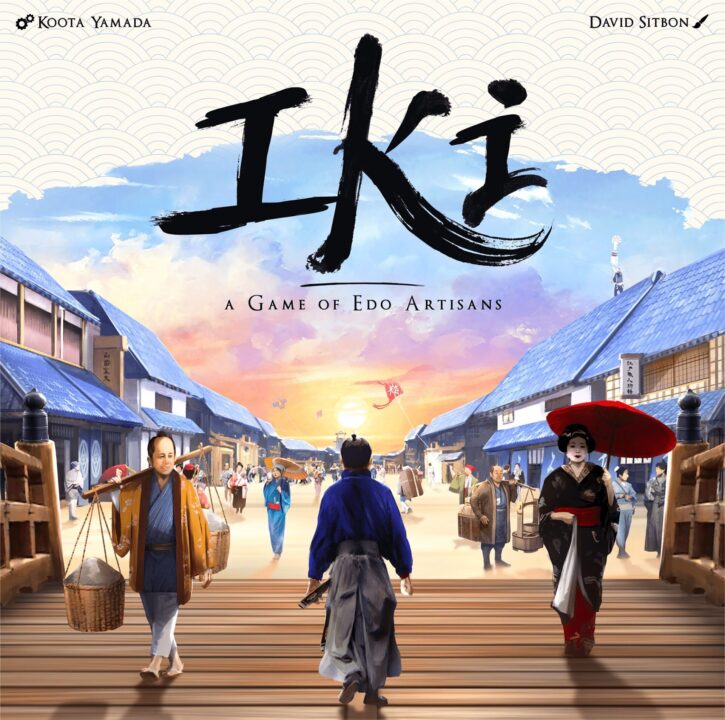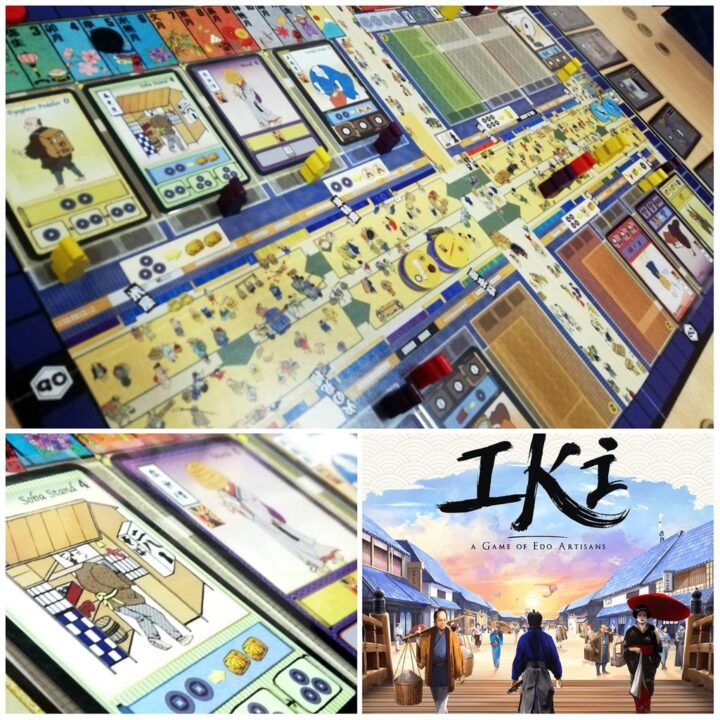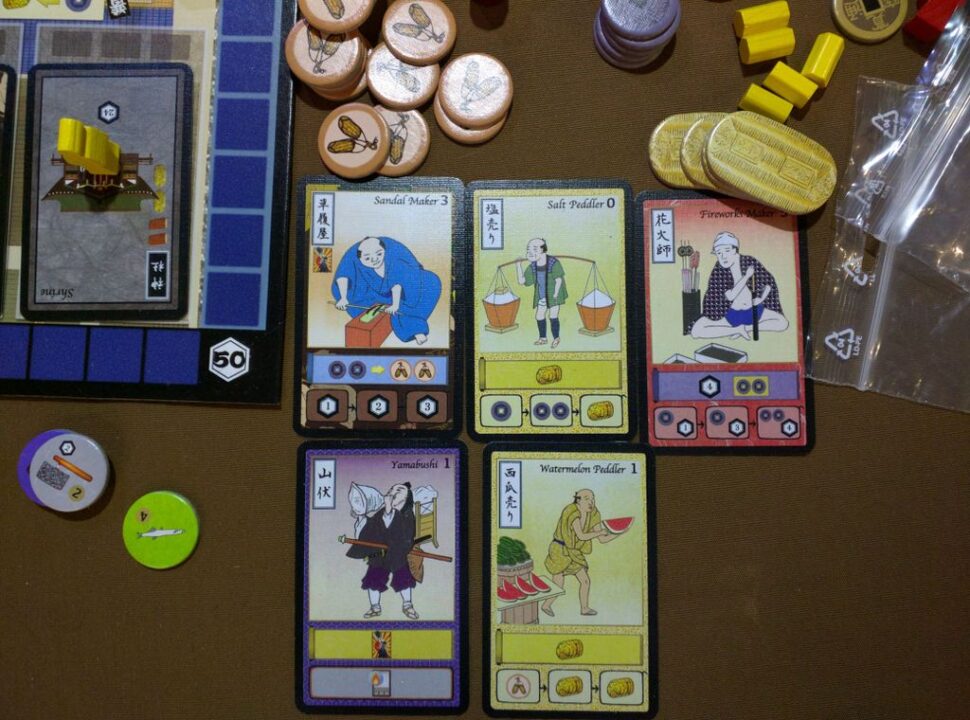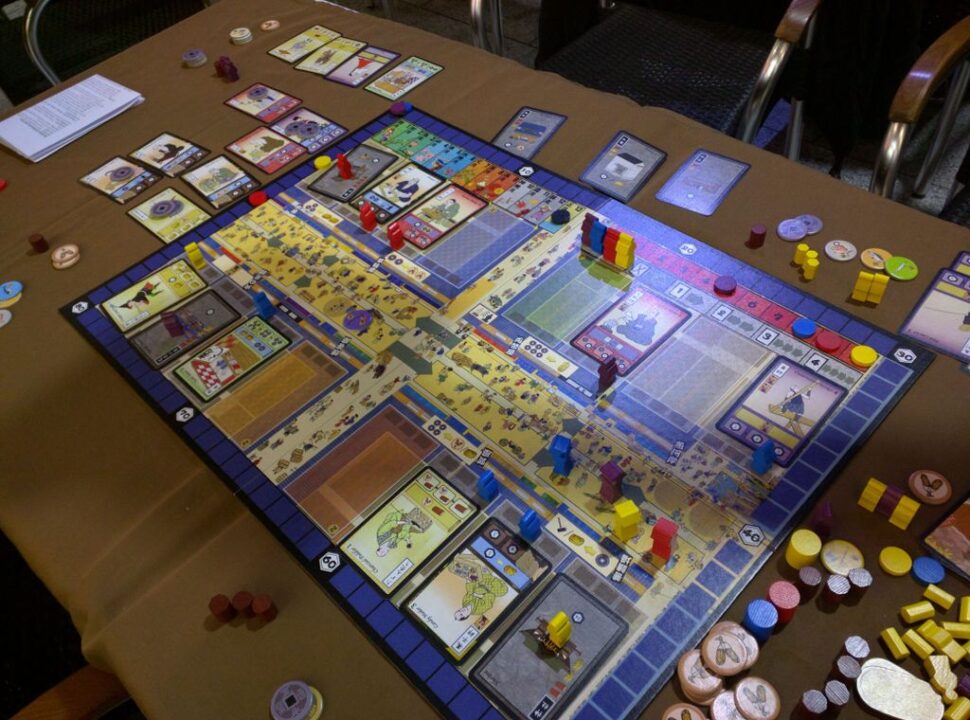Overview
Stepping into the bustling Edo period marketplace with its thriving artisans and shrewd merchants, ‘IKI: A Game of Edo Artisans’ welcomes players to a strategic and socially engaging journey through historic Japan. In this review, we will delve into the core of what makes IKI a nuanced board game; from the strategic depth that rewards adaptive planning, the compelling social interaction that glues players to the gameplay, to the artistry of the game’s components that enchants the senses. Join me as we sift through these key facets, nimbly bridging the gap between a rich cultural experience and board game excellence.
How It Plays
Setting up
The preparatory phase in IKI involves player distribution of craftsmen, employment cards, and shared establishment tiles in Edo’s heart. Each artisan requires specific tools; players provision dutifully to optimize opening plays.
Gameplay
Turns unfold as interpersonal exchanges at Edo’s thriving market: players effectively hire, educating themselves in the skilled craftsmanship unique to each stallholder. Positioning on the board means contemplating future maneuvers amidst a dynamically shifting economy. Diligent resource and human capital management are paramount.
Winning the game
A nuanced architecting of long-term strategy, meeting evolved scoring conditions frequently. Attainment of the lofty title ‘Best Shop’ in Edo is for those displaying acumen in tactical deployment of workers interfaced with opportune execution of acquired skills.
Want to know more? Read our extensive strategy guide for IKI.
The Intricate Dance of IKI’s Strategy
Reflecting on my numerous forays into ‘IKI’, a distinctive aspect that always stands out is its profound Gameplay Depth and Strategy. Unpacking this game, especially while maneuvering through the bustling Edo period marketplace it beautifully emulates, requires a delicate blend of foresight and flexibility. I recall one session where a well-planned strategy cascaded into victory, each choice a cog in a finely tuned engine of commerce and culture.
Strategic Conduits
Transitioning through IKI’s rounds, players find myriad pathways to success. Diverse artisan skills coupled with fluctuating market demands make for a tantalizing strategic array. As a connoisseur of mechanics, the way IKI harmoniously welds tactical depth and player agency conjures a rich canvas upon which strategies unravel and evolve.
Adaptive Mastery
Furthermore, IKI’s allure is magnified when adaptive strategies come into play. Those instances where mid-game pivots turned the tides reveal this facet’s brilliance. IKI encourages, if not necessitates, an agile mindset, and keeps me coming back for more. Truly, this game’s strategic complexity never allows for a dull moment.
As I close this IKI Review section, like a craftsman weaves fabric, I’m anticipating detailing the vibrant tapestry of Social Interaction Dynamics.

Crafting Bonds in Edo’s Markets
Negotiation & Alliances
During our IKI playthroughs, the tables always buzz with negotiations that go far beyond simple resource exchanges. Whether persuading someone to avoid hiring the artist I’m eyeing, or jointly preventing a leader’s runaway victory, these discussions weave a tapestry of complex relationships, emblematic of IKI’s captivating dynamics.
Camaraderie Through Competition
Moreover, laughs and groans commingle as fortunes shift with each market day—a shared voyage through Edo-period Japan. This tapestry isn’t just competitive; it’s collaborative storytelling at its finest. True to my IKI Review experiences, this fosters a memorable camaraderie, offering a glimpse into the human fabric that buoys this extraordinary game.
And so, transitioning from the intangible to the tactile, let’s segue to the tangible facets of gameplay—specifically the Component Quality and Aesthetics of IKI that continue the journey from fabric to fabulous.
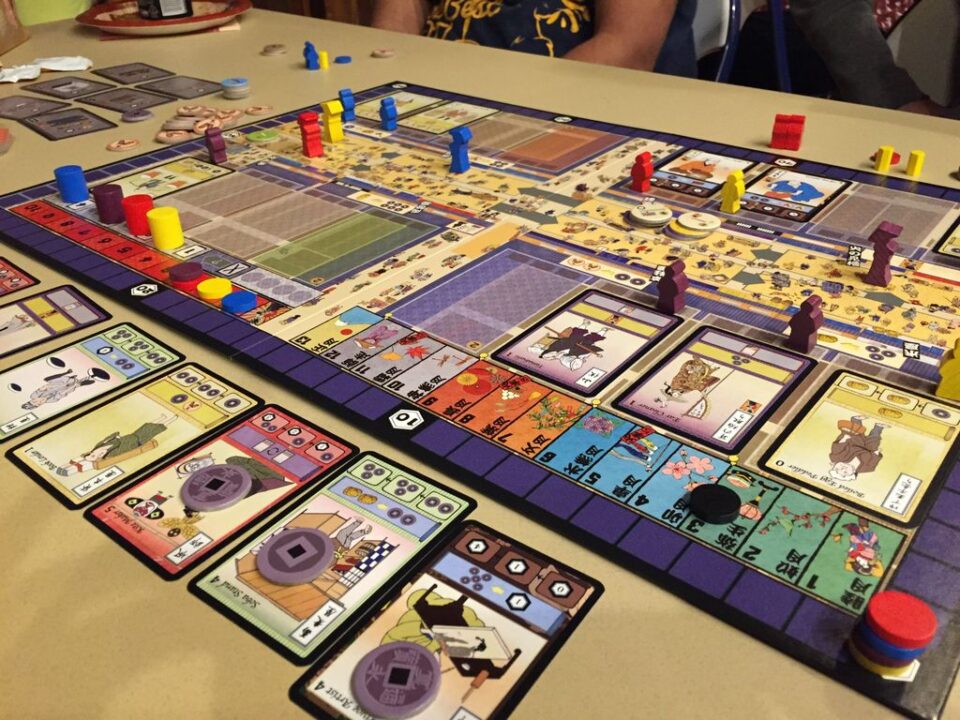
The Touch and Sight of Edo: IKI Components
Throughout my countless board game journeys, the sensory delight of meticulously crafted components can elevate the entire gaming experience. This stands true in my IKI Review sessions, where the Material Quality of its components wasn’t just a background detail; it was a palpable premise to the cultural time travel the game’s artworks promise. The thick, sturdy tiles endure excited gameplay, and their textures become a silent nod to the designers’ dedication.
Artistic Flourishes
Transitioning to the table’s visual spectacle, IKI doesn’t shy away from painting history with broad, elegant strokes. Its board is a rich tapestry of Edo period art, a tabletop depiction that garners admiration and intentions just at a glance. Rifling through beautifully rendered cards, I’ve observed players being visibly drawn deeper into the game’s narrative, truly honing their merchant strategies not just in mind, but in spirit. I hold a deep appreciation for the vibrant artistry ever-present in every element.
Final Verdict
To conclude, it’s in components like these where a game transcends just being a game—the sort of quality and beauty that encapsulate everything we yearn for in a perfect game night. With IKI, such nights are a commonality. For anyone pondering its addition to their collection, consider this: IKI isn’t just recommended; it’s a tasteful must-have that stands, both in form and function, as a paragon of board game design.
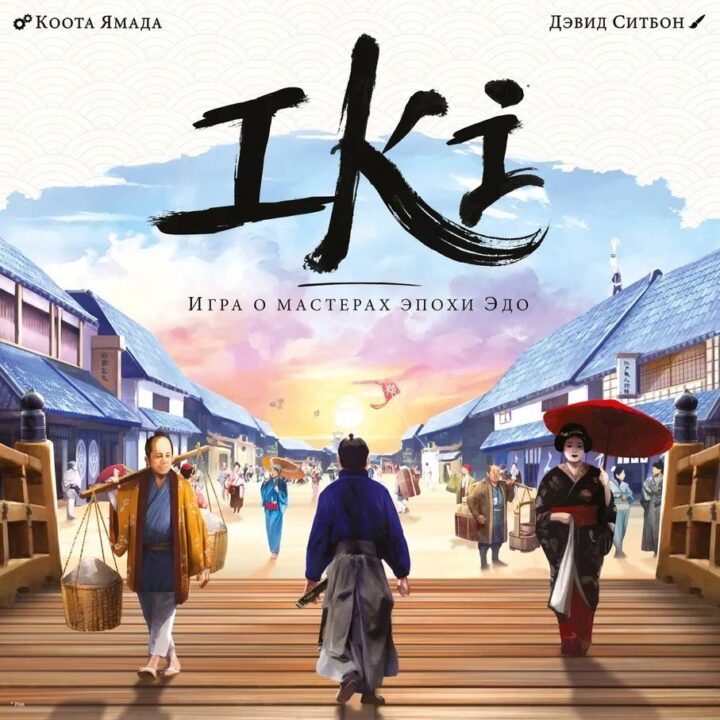
Conclusion
In tying up this review, I must say that IKI provides a rich tapestry of gaming experiences that seamlessly blends complex strategies with the hearty warmth of social interaction. The component quality and aesthetics add to the immersive nature of the game, ensuring that not only your mind is engaged in the strategic pondering, but your senses are also treated to the exquisite visual and tactile elements of play. IKI is truly a game that understands the assignment: to amuse, challenge, and delight. Whether you’re a board game aficionado or dipping your toes into the ocean of tabletop gaming, IKI is an experience that comes _highly_ recommended for those ready for a journey through Edo-period Japan.

